how to find producer surplus
What are Consumer Surplus and Producer Surplus?
Both consumer surplus and producer surplus are economic terms used to define market wellness by studying the relationship between the consumers and suppliers. They explain the opportunity cost consumers forego to gain a marginal benefit Marginal Benefit Marginal benefit is the highest amount that a buyer is willing to pay for an extra product. It is also known as marginal utility, for buying a good or service. To the producer, it is the willingness and ability to produce an extra unit of a product based on the marginal cost of producing more goods.
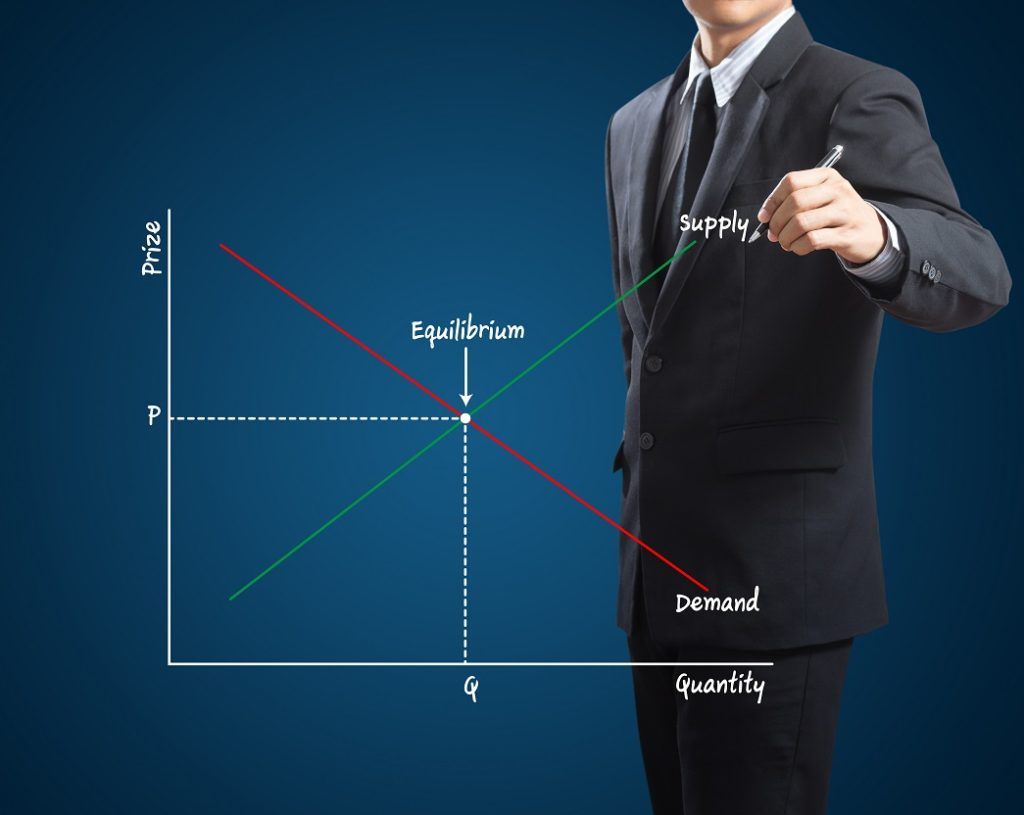
Summary
- Both consumer surplus and producer surplus are economic terms used to define market wellness by studying the relationship between the consumers and suppliers.
- The consumer surplus refers to the difference between what a consumer is willing to pay and what they paid for a product.
- The producer surplus is the difference between the market price and the lowest price a producer is willing to accept to produce a good.
Understanding Consumer Surplus and Producer Surplus
When discussing consumer and producer surplus, it is important to understand some base concepts used by economists to explain the inter-relationship.
Both consumer and producer surplus can be graphed to display either a demand curve or marginal benefit curve (MB) and a supply curve or marginal cost curve (MC).
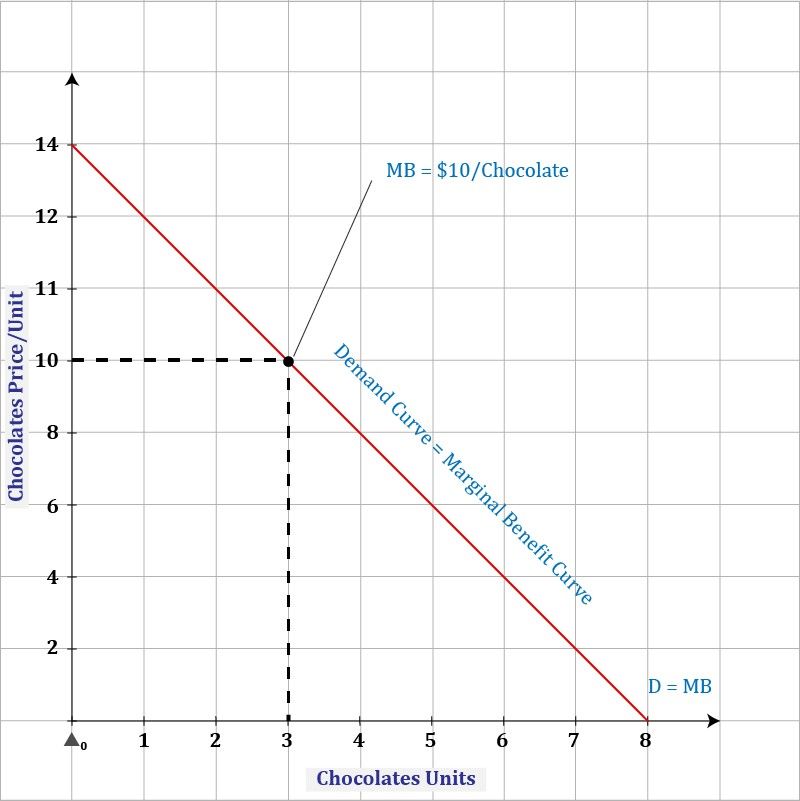
Consumer surplus refers to the monetary gain enjoyed when a purchaser buys a product for less than what they normally would be willing to pay. Each corresponding product unit price along the supply curve is known as the marginal cost (MC) Marginal Cost The Marginal Cost of Production is the cost to provide one additional unit of a product or service. It is a fundamental principle that is .

On the other hand, the producer surplus is the price difference between the lowest cost to supply the market versus the actual price consumers are willing to pay. The price of a product unit along the supply curve is known as the marginal cost (MC).
When graphing consumer surplus, the area above every extra unit of consumption, is referred to as the total consumer surplus. Similarly, the area above the supply curve for every extra unit brought to the market is referred to as the total producer surplus.
When you add both the consumer and producer surplus, you get the total surplus, also known as total welfare or community surplus. It is used to determine the well-being of the market. When all factors are constant, in a perfect market state, an equilibrium is achieved. This state is also referred to as allocative efficiency Allocative Efficiency Allocative efficiency is the level of output where marginal cost is as close as possible to the marginal benefits. It means that the price of – the marginal cost and marginal benefit are equal.

Understanding Consumer Surplus
To fully conceptualize consumer surplus, take an example of a demand curve Demand Curve The demand curve is a line graph utilized in economics, that shows how many units of a good or service will be purchased at various prices of chocolates plotted on a graph. The unit price is plotted on the Y-axis and the actual chocolate units of demand per day on the X units. The graph below shows the consumer surplus when consumers purchase two units of chocolates.
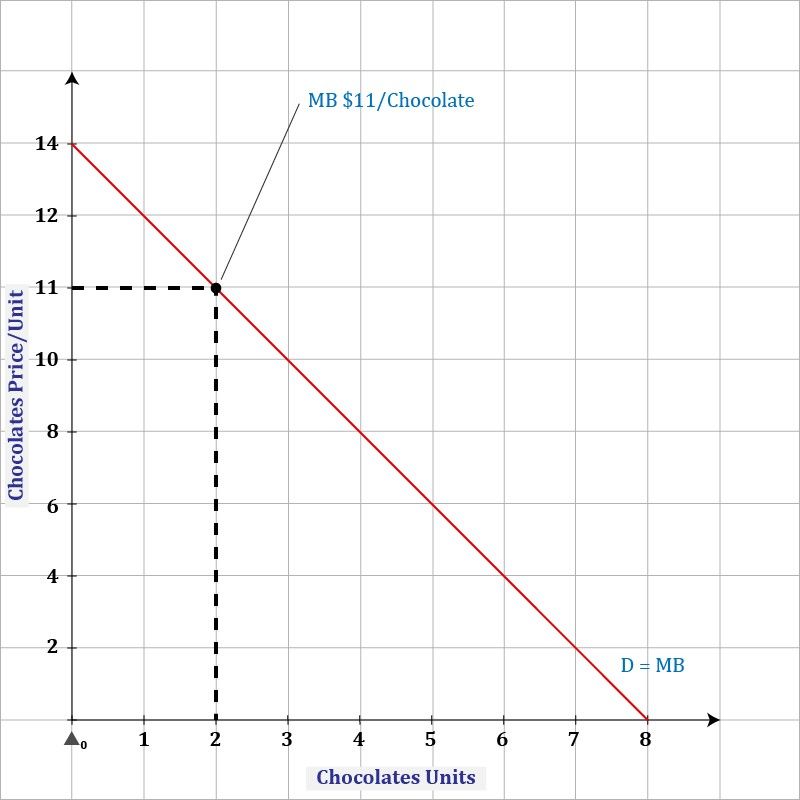
Calculating the Total Consumer Surplus
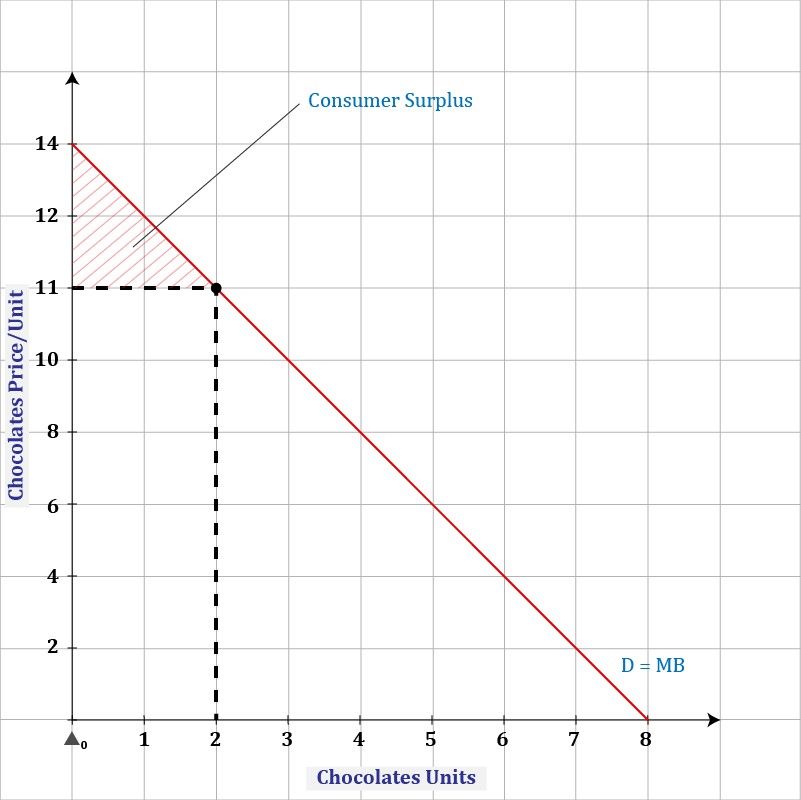
To calculate consumer surplus, account for Δ0 units. In the graph above, the corresponding unit price is $14. It is the market price that consumers are able and willing to purchase a bar of chocolate.
Since the demand curve is linear, the shape formed between Δ0 unit to 2 and below the demand curve is triangular. Therefore, the ordinary formula for finding an area of a triangle is used. The unit items cancel out to leave the result expressed in monetary form.
Total Consumer Surplus Formula

Where:
- Qn = Quantity of demand/supply either at equilibrium or the willing purchasing or selling price
- ΔP = The difference between the price at equilibrium or at the purchasing or selling point and the price at Δ0
Calculating the Total Consumer Surplus

In summation, the market saves $3 for the same unit it could've purchased for $14.
Understanding Producer Surplus
Using the same example with all the X and Y-axis numbers, the producer surplus is calculated using the same formula. Below is the graph for the illustration:

Calculating the Total Producer Surplus
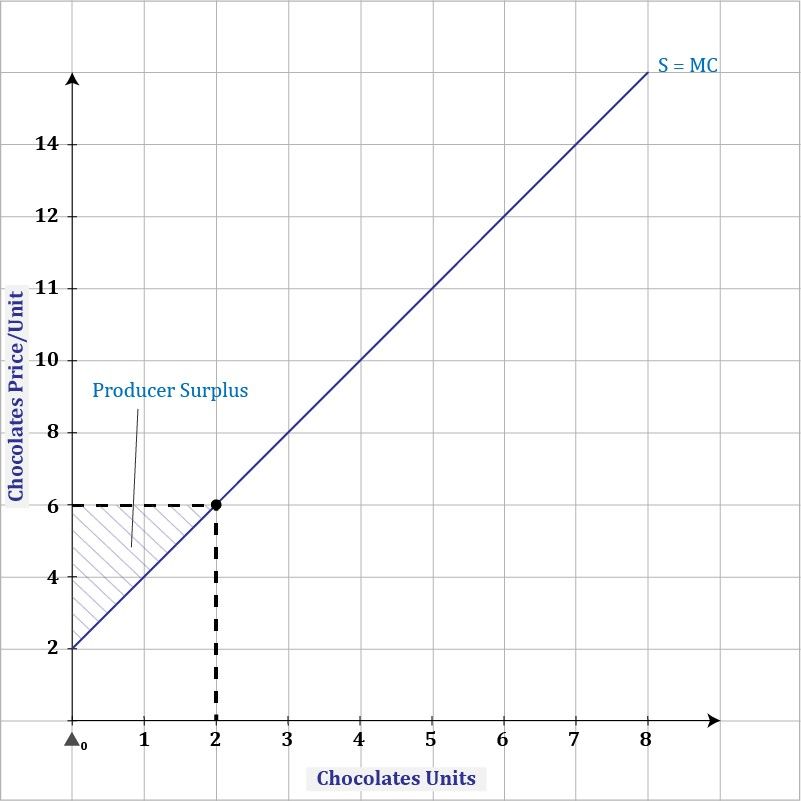
The producer surplus cost at two units is $4 ($6 – $2). This means that the supplier(s) will forego $4 per unit for producing two units.
Total Surplus
In the previous example, the total consumer surplus was $3, and the total producer surplus $4, respectively. The total surplus, therefore, will be $7 ($3 + $4). Below is the formula:
Total Surplus = Consumer Surplus + Producer Surplus
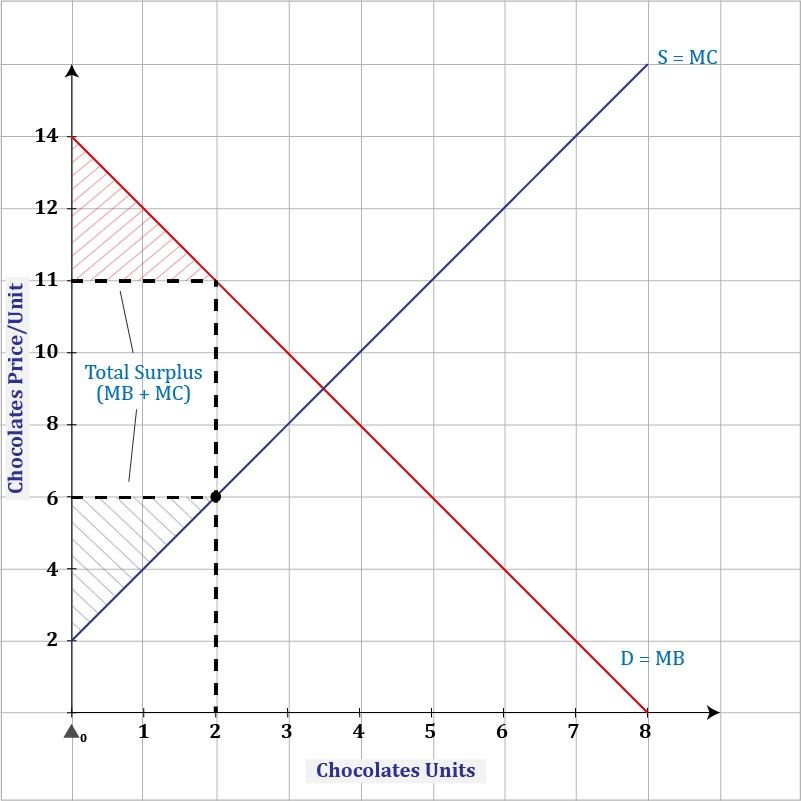
In the above example, the total surplus does not depict the equilibrium. There is a deadweight to shed off. Supplier overheads Overheads Overheads are business costs that are related to the day-to-day running of the business. Unlike operating expenses, overheads cannot be are higher for producing two units. Similarly, the consumer is getting less than what the market can offer.
As a result, to achieve a stable market, the producer(s) must increase the production to reduce the deadweight and attain the equilibrium. At the equilibrium, the consumer(s) will enjoy the highest marginal utility, and supplier(s) will maximize profits.
Related Readings
CFI is the official provider of the Commercial Banking & Credit Analyst (CBCA)® Program Page - CBCA Get CFI's CBCA™ certification and become a Commercial Banking & Credit Analyst. Enroll and advance your career with our certification programs and courses. certification program, designed to transform anyone into a world-class financial analyst.
In order to help you become a world-class financial analyst and advance your career to your fullest potential, these additional resources will be very helpful:
- Demand Demand Curve The demand curve is a line graph utilized in economics, that shows how many units of a good or service will be purchased at various prices
- Marginal Benefit Marginal Benefit Marginal benefit is the highest amount that a buyer is willing to pay for an extra product. It is also known as marginal utility,
- Deadweight Loss Deadweight Loss Deadweight loss refers to the loss of economic efficiency when the optimal level of supply and demand are not achieved. In other words, it is
- Marginal Utility Marginal Utility Marginal utility refers to the additional benefit derived from consuming one more unit of a specific good or service.
how to find producer surplus
Source: https://corporatefinanceinstitute.com/resources/knowledge/economics/consumer-surplus-and-producer-surplus/
Posted by: reidwhentersed73.blogspot.com

0 Response to "how to find producer surplus"
Post a Comment